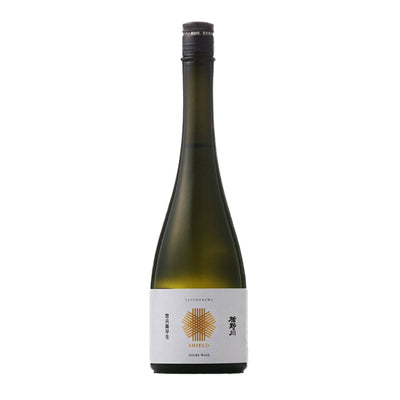
History
Japanese sake water, known as shikomi mizu (仕込み水), plays a pivotal role in the art of sake brewing, its significance rooted in centuries of tradition. As sake production advanced during the Heian Period (794–1185) and beyond, brewers discovered the profound impact of water quality on fermentation and flavor. Japan’s diverse geography, with its abundant rivers and natural springs, offers a unique spectrum of water profiles, filtered through mineral-rich volcanic rock.
Soft water, renowned for its low mineral content, became synonymous with regions like Fushimi in Kyoto, where it imparts sake with a smooth, refined character. In contrast, hard water, higher in minerals such as calcium and magnesium, is celebrated in places like Nada in Hyogo, producing bold, robust sake with a crisp finish. This distinction between nansui (soft water) and kōsui (hard water) not only shapes regional brewing styles but also influences the choice of rice and yeast, harmonizing with each element to craft balanced flavors.
Today, brewers meticulously select and analyze water sources, ensuring they complement the sake's intended profile. This attention to water quality reflects the enduring connection between Japan’s natural resources and the craftsmanship that defines its sake-brewing heritage.
Hard vs Soft Water
Japanese sake water, known as shikomi mizu (仕込み水), is vital to the brewing process and significantly impacts the flavor profile of sake. It is broadly classified into soft water (nansui) and hard water (kōsui), distinguished by mineral content. Hard water, often sourced from tall mountainous areas such as Nada in Hyogo Prefecture, is rich in calcium and magnesium, with mineral levels often exceeding 100 milligrams per liter. This mineral composition promotes faster fermentation, enhancing yeast activity and resulting in dry, crisp sake with a robust and clean finish, exemplified by the sake of Nada.
Soft water, typically found in regions with lower mountains or valleys, like Kyoto's Fushimi, Shimane, and Yamaguchi Prefecture, contains less than 50 milligrams per liter of minerals. The lower mineral content leads to slower fermentation, allowing for a more nuanced development of flavors, producing sake with a sweeter, softer, and more delicate profile. These regions are celebrated for their elegant and smooth sake, with Fushimi in particular being renowned for its velvety sweetness.
The interplay of water type and regional geology highlights Japan's diverse sake landscape, with brewers expertly using the mineral properties of their water sources to craft unique expressions, from dry and robust to sweet and refined.









